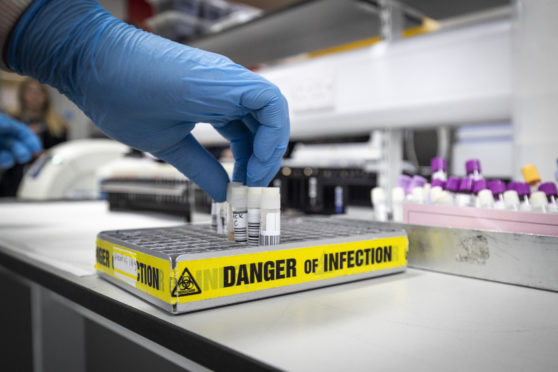
A new test is being developed which could detect whether people who have had coronavirus are still infectious.
Scientists are creating a test to detect how much active virus an infected person is harbouring – known as viral load.
Unlike current tests, which do not separately measure the non-infectious and the active parts of the virus, the team is refining a test which could tell users not only whether they are carrying active virus, but also how much.
This could help healthcare workers and others know when they are safe to return to work.
The research is being carried out at the University of Exeter and has been awarded a £52,000 grant from Animal Free Research UK.
Professor Lorna Harries, who is developing the test, said: “Currently, people with Covid-19 can recover completely, yet still test positive.
“That’s because the tests detect any genetic material left over by the virus after it is inactivated by the immune system.
“If successful, this new test will specifically look for active virus, and tell us how much of it is present.
“It would be incredibly useful in helping people safely to return to frontline duties, or patients return to care homes.”
The test will analyse the genetic material sub-genomic RNA, which is only present if the virus is active and the patient is potentially infectious.
The virus appears to pose a greater threat to people who are regularly exposed, such as frontline healthcare workers.
In future, researchers hope to develop a mathematical model to combine with the test to be able to develop a more personalised approach to predicting which patients are at risk of complications from coronavirus.
The calculation will be based on factors such as their age and health histories, combined with the concentration of virus in their bodies.
Carla Owen, chief executive of Animal Free Research UK, said: “This devastating virus is bringing out the best of humanity’s collective genius, ramping up novel ways of understanding, testing and treating human disease using human-relevant research without the use of animals.
“We believe Prof Harries’ test will ensure healthcare workers can get back to their vital jobs, protect the NHS, and save animal and human lives.”

Enjoy the convenience of having The Sunday Post delivered as a digital ePaper straight to your smartphone, tablet or computer.
Subscribe for only £5.49 a month and enjoy all the benefits of the printed paper as a digital replica.
Subscribe